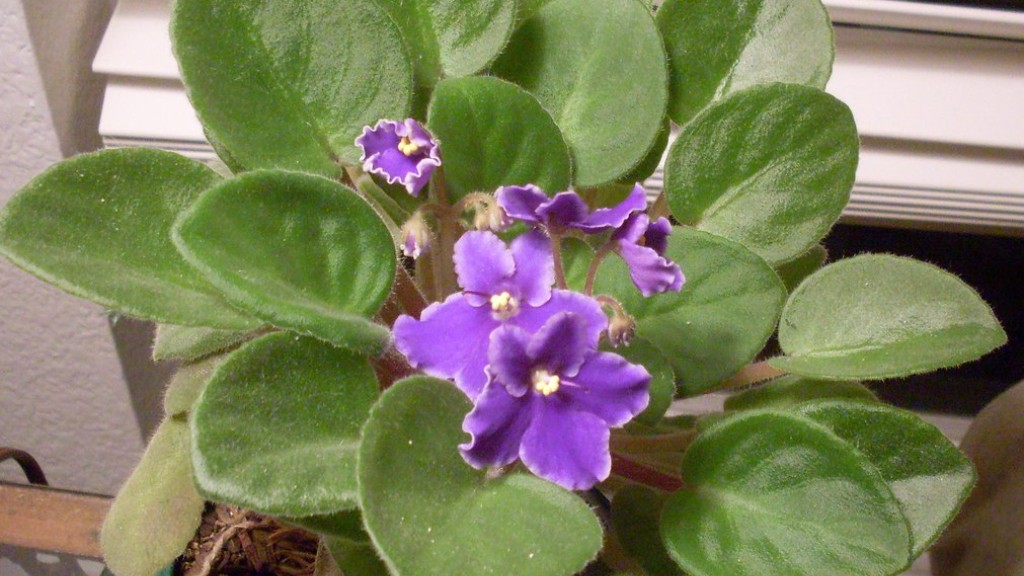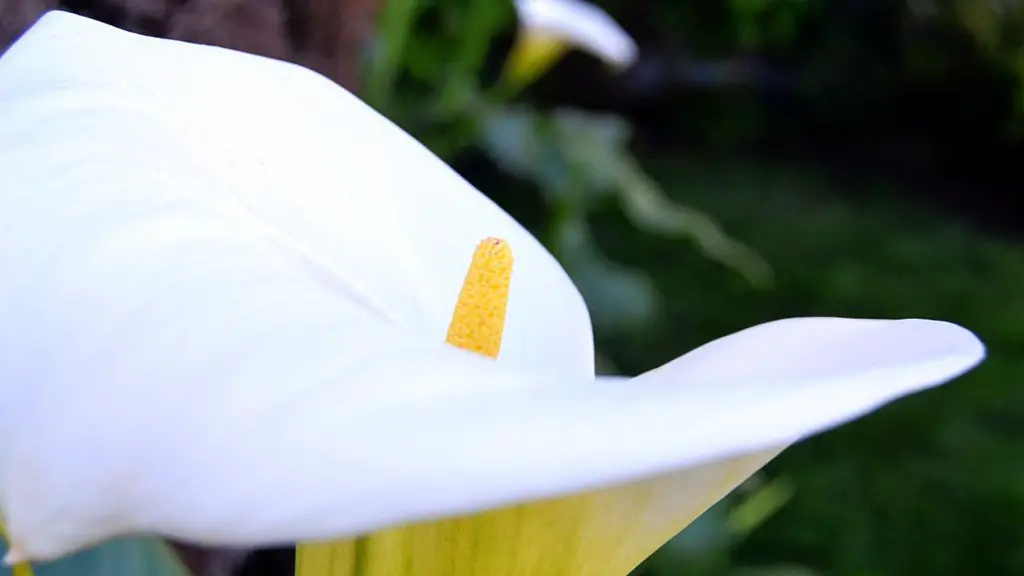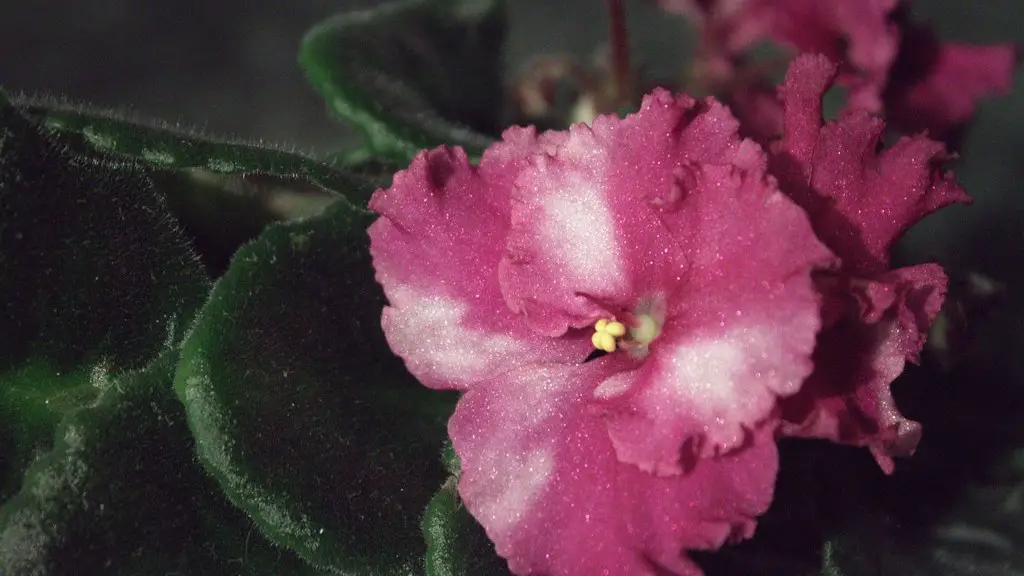African violets are a beautiful and popular houseplant. They are relatively easy to care for, but one of the most important things to remember is how often to water them. African violets need to be watered about once a week, giving them a good soaking each time. Be sure to allow the soil to dry out in between waterings. Over-watering is one of the most common problems with African violets, so err on the side of too little water rather than too much.
The best way to water African violets is to allow the soil to dry out slightly between watering. Water the plants when the soil feels dry to the touch, and be sure to empty any excess water from the saucer or tray after watering.
How much water does a African violet need?
The best guide to watering African violets is to feel the top of the soil. If it is dry to the touch, then it is time to water. African violets should be allowed to dry out between each watering for best results. Overwatering can kill a plant.
Watering your plant is important to keeping it healthy and encouraging blooming. Be sure to keep the soil moist to dry, and allow the soil around the roots to dry out before watering. The best way to water your plant is from the bottom, using room temperature water. Place the plastic grower’s pot in water, and allow the plant to absorb the water for no more than 30 minutes.
Do African violets need direct sunlight
African violets need bright, indirect sunlight to thrive. Choose a north- or east- facing window for best results. Keep plants away from cold glass and rotate the pot once a week so all leaves receive light. Extend daylight by placing African violets under a grow light during winter months.
To bottom water, simply fill a dish with water and set the African violet’s pot in it. The pot will absorb the water it needs from the bottom. Be sure to empty the dish after a few minutes so the roots don’t sit in water, which can lead to rot.
Should I mist my African violet?
It is important to water African violets correctly to avoid crown rot. The crown is the section of the plant at soil level and too much water can cause permanent leaf spotting. Use room temperature water and mist the foliage, being careful not to saturate the crown.
If you’re unsure about the quality of your tap water, it’s best to err on the side of caution and use filtered or distilled water for your African violets. Chlorine, chloramines, and dissolved solids can all be harmful to your plants, so it’s best to avoid them if possible.
What do Overwatered African violets look like?
If you have over-watered your African Violet plant, the soil will retain too much water. This retention of water will cause the leaves and/or leaf stems to turn soft, limp or mushy. If this happens, you will need to stop watering your plant and let the soil dry out.
African violets are delicate flowers that are prone to rot if they get too wet. When watering them, be careful not to wet the leaves or flowers, as this can cause them to rot. Instead, water them from the bottom, using a watering can with a long spout, or a watering wand.
Where is the best place to put an African violet
In order to get the best color and blooms from your plants, it is important to grow them in bright, indirect light. A plant stand three feet away from a west- or south-facing window is an ideal location. Plants will still grow when situated right beside north- or east-facing windows, but leaves will be thin and spindly, and plants less likely to bloom.
When it comes to African violets, it is best to choose a pot that is on the small side. This will help to keep the plant slightly pot-bound, which is ideal for its growth. If you have a standard African violet plant, aim for a starter pot that is 3-4 inches in diameter.
What is the lifespan of an African violet?
African violets are a beautiful and popular plant that can last up to 50 years with proper care. Repotting them every few years is important to keep them healthy and to help them continue to bloom. With their long lifespan, African violets make a great gift for someone who loves plants and wants to enjoy them for many years to come.
The African Violet is a delicate plant that requires special care in order to thrive. One of the most important things to remember is to aerate the roots of the plant, as this will help to keep them healthy and prevent them from becoming waterlogged. Additionally, water the plant from the bottom so that the roots can absorb the water over time, and be sure to use warm water that is around 70 degrees in order to mimic the plant’s natural environment.
Do you water African violets from the top or bottom
If you are looking to water your African violet plant the best way possible, you will want to water from the bottom up. Place your plant in a shallow tray of water for 30 minutes, allowing the soil to soak up the water through the drainage holes at the bottom of the pot. By watering from the bottom up, you will ensure that your plant gets the moisture it needs without risking overwatering.
You can absolutely get African violet leaves without any problem at all. However, you must use a very sharp knife and be very careful not to damage the leaves. I would also recommend using gloves to protect your hands from the sap.
How do I get my African violet to bloom again?
There are a few things you can do to help your African Violet bloom again:
1. Make sure it is getting enough light – African Violets need at least 12 hours of light per day to bloom. If it is not getting enough light, try moving it to a brighter spot.
2. Increase the humidity around the plant – African Violets like humid conditions. You can create a more humid environment by grouping plants together, using a humidifier, or placing the pot on a tray of pebbles and water.
3. Fertilize regularly – African Violets need to be fertilized every 2-3 weeks during the growing season. Use a specific African Violet fertilizer, or a general all-purpose fertilizer diluted to half strength.
4. Avoid extreme temperatures – African Violets prefer temperatures between 70-80 degrees Fahrenheit. Avoid drafts from windows or doors, and make sure the plant is not near a heating or cooling vent.
5. Use the right type of soil – African Violets need a light, well-draining soil. You can purchase African Violet potting mix, or make your own by mixing equal parts peat moss, perlite,
Even if the leaves of your plants are wet, you can safely return them to the fluorescent light garden. A low-nitrogen, high-phosphorous, soluble plant food is ideal for African violets. Jack’s Classic 10-30-20 formula is a great option for fertilizing.
Warp Up
It is typically recommended to water African violets around once a week, allowing the soil to dry out slightly in between watering.
The African violet is a delicate flower that needs to be watered carefully. Over-watering can damage the plant and make the flowers fall off. The best way to water African violets is to use a watering can with a long, narrow spout. Water the soil, not the leaves, and let the water soak in for a few minutes before watering again.





